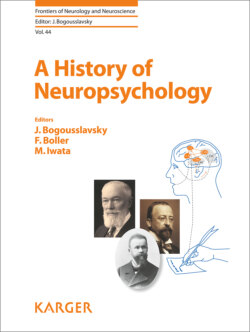Читать книгу A History of Neuropsychology - Группа авторов - Страница 18
На сайте Литреса книга снята с продажи.
Comprehension and the Temporal Lobe
ОглавлениеBroca was correct to link speech loss (later called motor, or non-fluent, aphasia) to left-hemisphere dysfunction, but he was mistaken if, in stating that comprehension belongs “simultaneously” to both hemispheres, he meant “equally.” Further studies of persons with comprehension deficits showed that here too the left hemisphere had a special role (e.g., Bastian [31]; Broadbent [32]).
The most revealing accounts came in 1874 from Carl Wernicke (Fig. 3, [33]), then a 26-year-old medical student. His first patient, Suzanne Adam, after falling ill from an unknown cause, could “comprehend absolutely nothing … said to her.” Her speech, though fluent, was confused, with “meaningless, garbled words” and paraphasias, although the overall meaning was “graspable in a general way” (quoted in translation in Eggert [34], p 120). Wernicke traced the symptoms to a posterior lesion in the superior temporal lobe on the left side.
Fig. 3. Carl Wernicke (1848–1905). From Galerie Hervorragender Ärzte und Naturforscher. J.F. Lehmanns Verlag, 1893. Public Domain.
